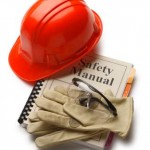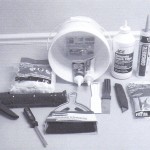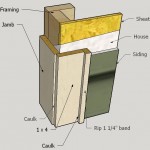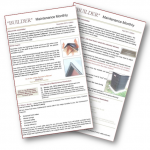Performance Standard: HBR articles 14-5, 15-1 Click icon to view book 
Noisy ducts – When metal is heated, it expands, and when cooled, it contracts. The resulting “ticking” or “cracking” sounds generally are to be expected and do not constitute a defect.
Warranty: NONE
Insufficient heat – Your heating system was designed to comply with the Residential Building Code of the State of New York. The heating design criteria for the Upstate New York Area mandates a minimum indoor temperature of 68 degrees F based on an outdoor winter design dry-bulb temperature of 2 degrees F as measured in the center of each room (excluding basement) at a height of 5 feet above the floor.
Warranty period: 2 years
Notes
Good maintenance of your furnace can save energy dollars and prolong the life of the furnace. Carefully read and follow the manufacturer’s literature on use and maintenance. The guidelines here include general information only.
Pictorial Heating tips (edit page as needed to match your features)
Homeowner Operation and Maintenance
Adjust vents and dampers – Experiment with the adjustable registers in your home to establish the best heat flow for your lifestyle. Generally, you can reduce the heat in seldom-used or interior rooms. This is an individual matter and you will need to balance the system for your own family’s needs.
There are also in-line dampers to help you control the amount of air flow to individual floor registers. These dampers are in the basement, on the supply ducts coming off the main trunk line. The little silver lever allows full air flow when it is in line with the duct. Turning it restricts the flow. By experimenting with the dampers, it is possible to fine tune the heating and cooling to suite your needs. Expect that there will be some trial and error work necessary. Damper positions that work for heating may need to be adjusted for cooling and visa-versa. This fine tuning of the system is a homeowner responsibility.
Avoid overheating – Do not overheat your new home. Overheating can cause excessive shrinkage of framing lumber and may materially damage the home. In the beginning, use as little heat as possible and increase it gradually.
Duct noise – Some popping or pinging sounds are the natural result of ducts heating and cooling in response to airflow as the system operates.
Filter – A clean filter will help to keep your home clean and reduce dusting chores. Remember to check the filter every month and change the filter at least every three months. A dirty filter can slow airflow and cause cold spots in your home. Although it takes less than one minute to change the filter, this is one of the most frequently overlooked details of normal furnace care.
We have provided you with enough filters for the first year you are in your new home. You will find the size and type printed along the edge of the filter when you need to purchase more.
If you have a permanent, washable, removable filter, you need to clean it monthly. Use only water to clean the filter, tap to dry or air dry, and leave unit off for a brief period. Do not use soaps or detergents on the filter.
Re-installing furnace bower panel (fan cover) – You need to position the furnace blower panel cover correctly for the furnace blower (fan) to operate. This panel compresses a button that tells the blower it is safe to operate. Similar to the way a clothes dryer door operates, this panel pushes in a button that lets the fan motor know it is safe to come on. If that button is not pushed in, the furnace will not operate.
Gas odor – If you smell gas, call the gas company immediately.
On-Off switch – Many furnaces have an on-off blower switch. This switch looks like a regular on/off light switch and is located in a metal box mounted outside the furnace. When turned off, this switch overrides all furnace commands and shuts down the blower. This is usually done only when maintenance service is being performed, although young children have been known to turn the furnace off using this switch. (If your furnace is a high-efficiency model, it does not have a pilot or an on-off switch.)
Return air vents and registers – For maximum comfort and efficient energy use, arrange furniture and draperies to allow unobstructed airflow from registers and to cold air returns. Several times a year clean the air vent covers and removable registers. With the floor registers removed, vacuum or wipe clean the exposed metal duct.
Winter – If you have a high efficiency furnace, make sure snow does not block the air intake or vent on the outside of your home.
Temperature – Depending on the style of your home, temperatures can vary from floor to floor 10 degrees or more on extremely cold days. The furnace blower will typically cycle on and off more frequently and for shorter periods during severe cold spells.
Thermostat – The furnace will come on automatically when the temperature at the thermostat registers below the setting you have selected. When the furnace is on, setting the thermostat to a higher temperature will not heat the home faster. Thermostats are calibrated to within plus or minus 5 degrees.
For energy savings, read the thermostat manual and take advantage of its automatic set-back capabilities.
Trial Run – Have a trial run early in the fall to test the furnace. (The same applies to air conditioning in the spring.) If service is needed, it is much better to discover that before the heating season.
Before calling for service, check to confirm that the:
- Thermostat is set to “heat” and the temperature is set above the room temperature.
- Blower panel cover is installed correctly for the furnace blower (fan) to operate. This panel compresses a button that tells the blower it is safe to operate. Similar to the way a clothes dryer door operates, this panel pushes in a button that lets the fan motor know it is safe to come on. If that button is not pushed in, the furnace will not operate.
- Breaker on the main electrical panel is on. (Remember, if a breaker trips you must turn it from the tripped position to the off position before you can turn it back on.)
- Switch on the side of the furnace is on.
- Fuse in furnace is good. (See manufacturer literature for size and location.)
- Gas line is open at the main meter and at the side of the furnace.
- Snow is not blocking the air intake vent outside
- Filter is clean to allow airflow.
- Vents in individual rooms are open.
- Air returns are unobstructed.
Even if the troubleshooting tips do not identify a solution, the information you gather will be useful to the service provider you call.
A heating emergency is: Total loss of heat when the outside temperature is below 50 degrees F
BUILDER Limited Warranty Guidelines
Adequacy of the system is determined by its ability to establish a temperature of 70 degrees F, as measured in the center of the room, 5 feet above the floor. In extremely cold temperatures (10 degrees below or colder), the system should be able to maintain a temperature differential of 80 degrees from the outside temperature. BUILDER will ensure the system meets the design criteria during the warranty period.
Duct placement – The exact placement of heat ducts may vary from those positions shown in similar floor plans.
Duct work – Although the heat system is not a sealed system, the ductwork should remain attached and securely fastened. If it becomes unattached, BUILDER will repair as needed.
Noisy ducts – Expansion or contraction of metal ductwork results in ticking or popping sounds. While eliminating all these sounds is impossible, BUILDER will attempt to correct oil canning. (Oil canning is a loud bang that occurs when a large area of sheet metal like those found in air ducts makes a loud noise as it expands and contracts in response to temperature changes and/or resulting from deflection of the floor system.)











